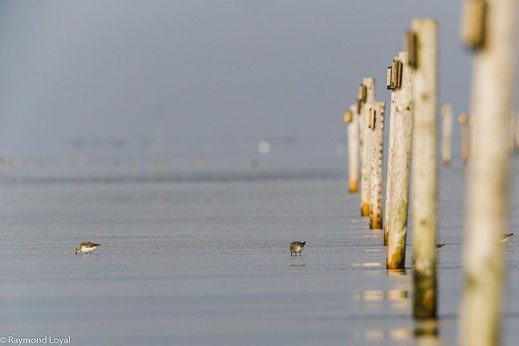The Waddensea
The Wadden Sea is situated in the coastal region of the North Sea and lies between Skallingen in Denmark to Den Helder in The Netherlands. In between are the Dutch islands of Texel, Vlieland, Terschelling, Ameland, Schiermonnikoog and Rottumerplaat.
On the German side there are the Frisian islands of Borkum, Memmert, and Juist; the East Frisian islands of Norderney, Baltrum, Langeoog, Spiekeroog and Wangerooge. At the German coastal area of Schleswig-Holstein there are Koogs and Halligs and the North Frisian islands of Pellworm, Amrun, Föhr and Sylt.
The Danish part of the North Frisian islands are Fanö, Mandö and Römö.
The Wadden Sea makes up the direct coastal area between Den Helder in The Netherlands and the Danish Skallingen. Because of the are being part of the coastal line the region is affected by the tidal system which floods the area twice a day with the high tide and also twice a day the low tide let the ocean withdraw up to 40 km from the coastline.
The entire area of the Wadden Sea is said to cover about 9000 km², the coastal length is about 450 km.
Through tidal creeks or tidal trenches water comes in with high tide and also recedes during low water.
The Wadden Sea is no more than the direct sea bed. This sea bed is habitat for birds, fishes, shells, worms, insects and specialised plants.
The Wadden Sea is directly connected to the river estuaries of Ijssel / Ijsselmeer, Ems, Elbe and Eider (near the German town of Tönning). There are a number of smaller rivers also entering into the North Sea / Wadden Sea.
The Wadden Sea is also one of the largest coherant wetlands. It is the largest wetland in Europe and only second to the Amazon Delta. A specific feature of the Wadden Sea are the so-called salt marshes or saltmarsh or tidal marsh, which is basically wetland between the coastal intertidal zone and the land. Saltmarshes are flooded regularly by the tides. On tidal marshes only specialised plants can grow and survive because of their salt-tolerance. The usual plants are herbs, low shrubs and mostly grasses.
The Wadden Sea is the stepping stone for birds during migration in spring and autumn. Also, it is a famous wintering site for birds.
Waders, ducks and geese use the Wadden Sea for migration stopover or as a wintering site. During that time there are thousands of them at one spot at a time. The birds are very shy but can be watched over a certain distance without disrupting the animals.
The following map shows the habitats at the coastline in the Wadden Sea.
This file is licensed under the Creative Commons Attribution-Share Alike 2.0 Generic license

National Parks Wadden Sea
The Neighbouring states to the Wadden Sea all have set up and maintain national parks to preserve the Wadden Sea. Please find the parks listed as follows:
- National Park Lauwersmeer / The Netherlands
- National Park Lower Saxony Wadden Sea / Germany
- National Park Hamburg Wadden Sea / Germany
- National Park Schleswig-Holstein Wadden See / Germany
- National Park Vadehavet / Denmark
Link to the German site Nationalpark-Wattenmeer.de
Bird Species in the Wadden Sea
Waders
- Dunlin
- Oystercatcher
- Curlew
- Golden Plover
- Red Knot
- Norther Lapwing
- Purple Sandpiper
- Bar-tailed Godwit
- Whimbrel
- Common Redshank
- Pied Avocet
- Sanderling
- Common Ringed Plover
- Kentish Plover
Gull, Terns and Skuas
- Great Black-backed Gull
- Lesser Black-backed Gull
- European Herring Gull
- Mew Gull
- Black-headed Gull
- Black-legged Kittiwake
- Common Tern
- Little Tern
- Great Skua
Ducks and Geese
- Common Shelduck
- Common Eider
- Mallard
- Common Scotter
- Eurasian Wigeon
- Greaylag Goose
- Barnacle Goose
- Brant Goose
Barnacle Goose feeding on a field behind the dunes
- Northern Fulmar
- Cormorant
- Horned Lark
- Eurasian Skylark
- Snow Bunting
- Peregrine Falcon
- White-tailed Eagle



